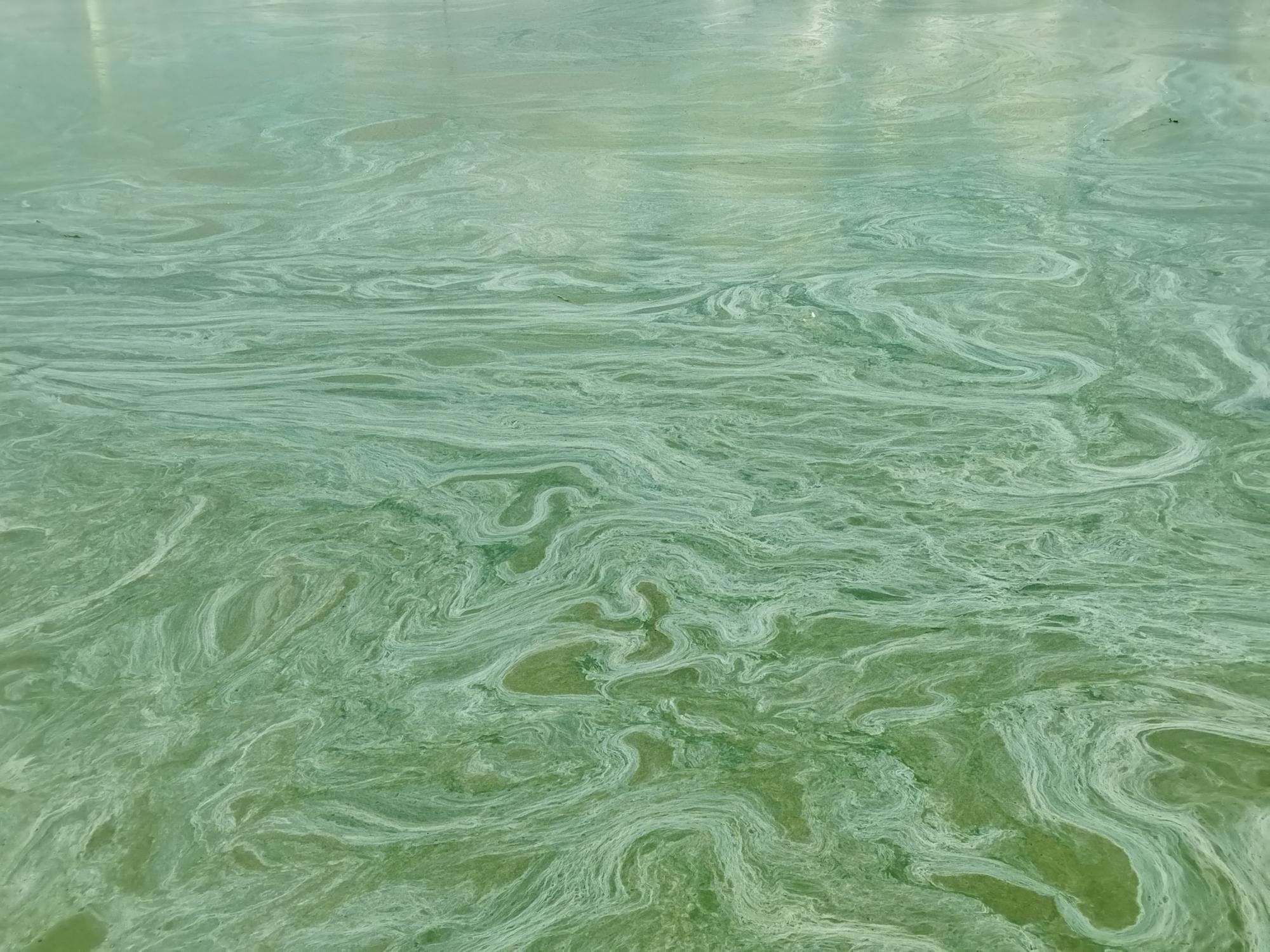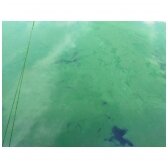Algae in pond. How to defeat?
-
Algae form in a pond when sunlight reacts with nutrients in the water. These nutrients consist primarily of ammonia and nitrates, which you can recognize as fertilizer ingredients. These nutrients are formed from the breakdown of waste such as leaves, grass and other wind-blown organic matter, as well as from fish waste and uneaten fish food.
When this waste decomposes, nutrients become food for algae, including filamentous algae which floats under water, covers stones, adheres to the surface of your pond, also for green algae
Information on filamentous algae and their removal.
Blue green algae. What is it?
Blue-green algae are microscopic, plant-like organisms that occur naturally in ponds, rivers, lakes and streams. Although often blue-green, they can also be olive-green or red.
These algae are not wholly algae, but a species of bacteria called blue-green bacteria, which is commonly found in many lakes. This type of bacteria thrives in warm water, rich in nutrients. Under the right conditions, bacteria can grow quickly, forming a "bloom".


How to recognize it
Blue-green algae are not normally visible in the water, but populations can increase rapidly to form a large mass or scum called a bloom when conditions are favorite.Blooms most often occur in late summer and early fall. They thrive in areas where the water is shallow, slow moving and warm, but they can be present in the deeper, cooler water.
Dense blue-green algae blooms can make the water look bluish-green, or like green pea soup or turquoise paint. Very dense blooms may form solid-looking clumps.
Fresh blooms often smell like newly mown grass while older blooms may smell like rotting garbage.
Causes
One key factor contributing to the growth of blue-green algae is the amount of nutrients available such as phosphorus and nitrogen.Blue-green algal blooms can be caused by agricultural and stormwater runoff as well as leaching from septic systems.
If you spot it
Take a cautious approach, as some varieties of this algae can produce toxins that are harmful to both humans and animals.If you suspect a blue-green algal bloom:
- assume toxins are present
- avoid using, drinking, bathing or swimming in the water (call your local health unit for swimming advisories)
- restrict pet and livestock access to the water

When blue-green algae produce cyanotoxins (toxins produced by cyanobacteria) that can make humans and animals sick, they are considered harmful. In general, algae are not harmful.
You can check whether your body of water is heavily contaminated with these algae by a simple test:
-
Use a clear glass container with a lid
-
Add water from the pond (stir the surface) to fill 3/4 of the pan. Put the cover on.
-
Put the dish in the fridge for the night
-
Carefully take out the dish in the morning. Try to keep the water from moving.
-
See what algae is in the dish.
-
If algae settles on the bottom, there is little algae in the pond.
-
If the algae is concentrated in a layer on the surface of the water, the pond is rich in algae.
Green and blue-green algae are destroyed in the same way as other algae.Using algicides or oxygen product Quickoxy kills algae quickly. Dead algae must be collected / removed quickly and bioproducts should be used to decompose their residues, as they will become a food source for new algae when deposited on the bottom. An additional source of oxygen (aeration or LONGOXY) is required for the biodegradation of dead algae.
If not to remove dead algae or no additional oxygen added - can be dangerous for pond fish.
-
UV filters can be used. It is necessary to combine with methods that remove nutrients from pond water (bioproducts, absorbents)
-
Bioproducts (AuqaProEZ and others). As bacterial colonies grow, they feed on the same food as algae. When a food source is lost, the algae die and are broken down by the same bacteria. Complete removal of algae can take 3-4 months. It is a completely safe algae removal method for flora and fauna. High doses can also be used if needed. Better to be used to prevent algal growth.
Other algae reduction tips
-
If possible, plan your pond out of direct sunlight throughout the day. The cooler the pond, the less algae there will be in the summer
-
Plant aquatic plants in your pond up to 30-40% of the pond surface. These plants will lower the pond temperature and feed on the ammonia and nitrates in the water
-
Don’t feed the fish too much. Goldfish and Koi usually do not need to be fed daily. The more food for fish, the more nutrients in the pond for algae. Feed the fish no more than once a day and give them no more food than they can consume in 2-3 minutes. Do not overload the pond with fish.
-
Clean the pond of leaves and other contaminants.




